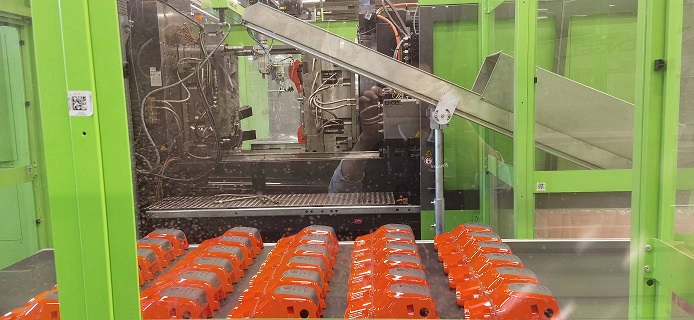Rapid Tooling and Plastic Injection Molding Costs: Exploring Prototype!

In the manufacturing world, where speed, precision, and cost-efficiency are paramount, rapid tooling and plastic injection molding have emerged as essential techniques. These methods enable companies to create high-quality prototypes and end-use products efficiently. The key to success in these endeavors lies in mastering the forms, understanding the nuances of plastic injection molding costs, and selecting reliable prototype mold and insert molding suppliers.
Rapid Tooling: Accelerating the Path to Perfection
rapid tooling, as the name suggests, is a technique that expedites the creation of molds used in plastic injection molding. Unlike traditional tooling methods, which can be time-consuming and expensive, rapid tooling leverages advanced technologies like 3D printing and CNC machining to create molds swiftly and accurately. This process is particularly beneficial for the prototyping phase, where the ability to iterate and refine designs quickly can significantly shorten the development cycle.
One of the remarkable advantages of rapid tooling is its flexibility. Depending on the project’s requirements, manufacturers can choose from various materials, such as aluminum, steel, or even composite materials. This adaptability ensures that the resulting molds can withstand the rigors of injection molding while maintaining precision and durability.
Plastic Injection Molding Costs: Beyond the Balance Sheet
When considering plastic injection molding cost, it is a critical factor influencing decision-making. However, focusing solely on the upfront price can lead to suboptimal outcomes. It’s essential to recognize that the overall cost encompasses multiple aspects, including material selection, tooling expenses, production volume, and post-processing requirements.
While rapid tooling can help reduce the lead time and costs associated with mold production, it’s crucial to remember that the quality of the mold directly affects the final product. High-quality molds might have a higher initial cost but lead to smoother production processes, fewer defects, and ultimately lower prices in the long run.
Moreover, the choice of material for injection molding significantly impacts the costs. Engineering-grade plastics might have a higher material cost, but they offer enhanced mechanical properties, durability, and resistance to environmental factors, ultimately ensuring a longer lifecycle for the end product.
Prototype Mold and Insert Molding Suppliers: Choosing the Right Partners
Collaborating with reliable prototype mold and insert molding suppliers can make or break the success of a project. The supplier’s expertise, capabilities, and commitment to quality directly influence the final product’s performance and overall cost-effectiveness.
When selecting a prototype mold supplier, evaluating their track record in rapid tooling and injection molding is vital. A supplier with a proven history of producing high-quality molds and components demonstrates their proficiency in understanding design intricacies, material compatibility, and manufacturing processes. Look for suppliers who offer a comprehensive range of services, including design assistance, material selection guidance, and prototyping support.
The prototype mold supplier has proven history of producing high-quality molds and components demonstrates.
Insert molding, a process that involves placing pre-fabricated components into the mold before injecting plastic, insert molding supplier can provide added functionality and strength to the final product. Collaborating with a proficient insert molding supplier ensures seamless integration of these components, reducing assembly steps and potential points of failure.
The Synergy of Efficiency and Excellence
In the dynamic landscape of modern manufacturing, rapid tooling, and plastic injection molding have emerged as powerful tools for turning innovative ideas into tangible realities. The synergy of efficiency and excellence enables companies to meet market demands quickly while maintaining stringent quality standards.
Understanding the actual costs of plastic injection molding involves a holistic view that encompasses materials, tooling, production volume, and post-processing considerations. While cost minimization is a goal, it should not come at the expense of compromising quality, as superior molds and materials lead to excellent end products.
Collaborating with prototype mold and insert molding suppliers who prioritize quality, innovation, and customer satisfaction can transform a project’s trajectory. Suppliers actively engaging in the design phase, providing material expertise, and ensuring rigorous quality control contribute to the final product’s success.
In conclusion, the world of rapid tooling, plastic injection molding costs, prototype molds, and insert molding suppliers is a complex yet fascinating realm that shapes the products we interact with daily. By harnessing the potential of these techniques and making informed decisions, manufacturers can achieve the delicate balance of cost-efficiency and exceptional quality, driving innovation and progress in the manufacturing world.
